From Neptune launches to naval drones: the Ukrainian Navy's saga of defending the Black Sea
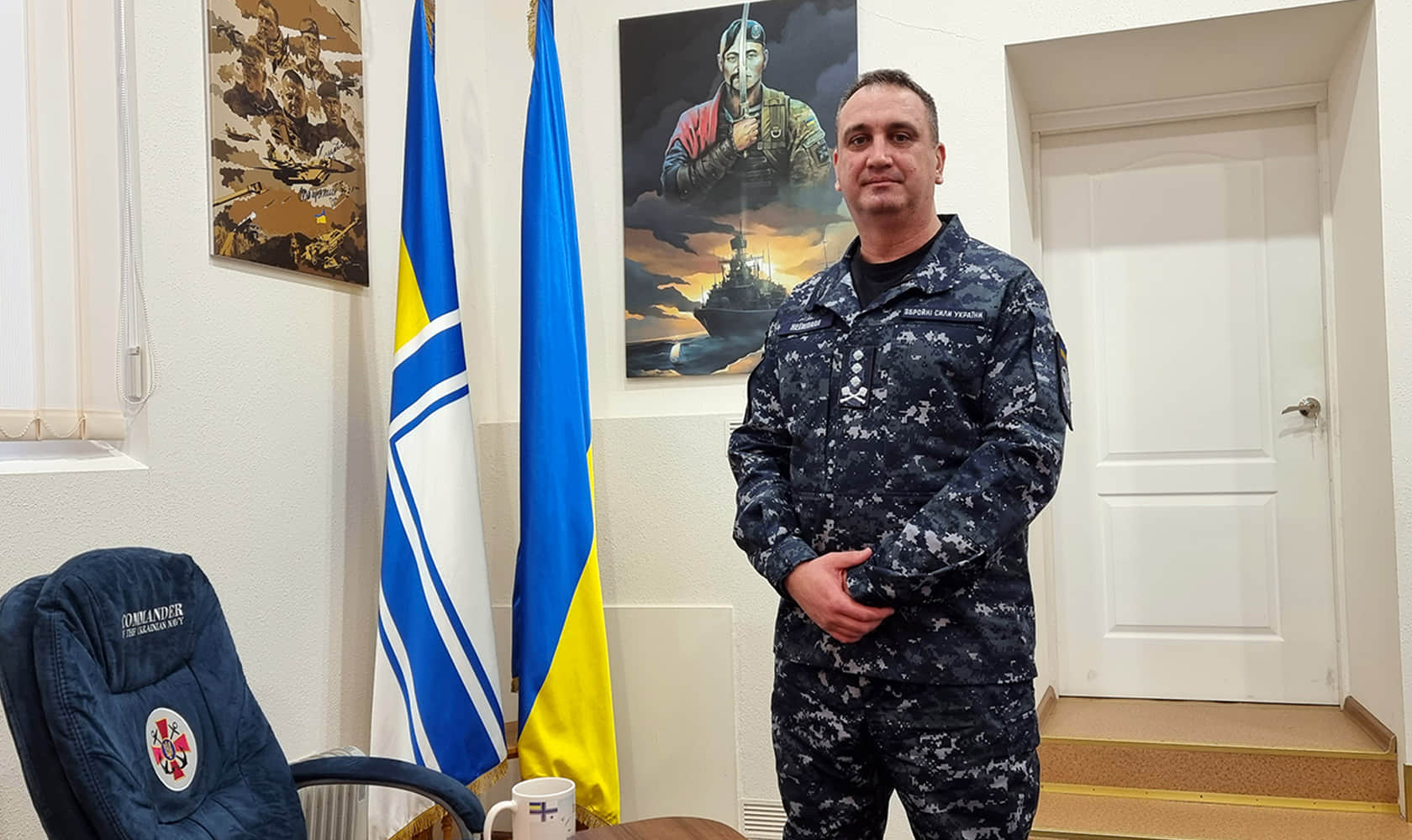
Vice Admiral Oleksii Neizhpapa, Commander of the Ukrainian Navy, was born in Sevastopol, grew up in Sevastopol, studied in Sevastopol, served in Sevastopol, and no one from his hometown called him on 24 February 2022.
"After 2014, I had no friends there, especially among my colleagues who were in the Armed Forces of Ukraine at the time in 2014. After that, we never maintained any relations with them. They are traitors. So, no one called me; there were no calls, warnings or anything like that. But I wouldn't have picked up the phone," the vice admiral explains to Ukrainska Pravda.
After the Russian annexation of Crimea, Neizhpapa was among those Ukrainian sailors who remained faithful to their oath and left Sevastopol for the mainland. So, our conversation takes place in his current office in Odesa.
This particular room is nothing special, but there are dozens of artefacts in its corners and on its walls that can be used to describe Ukraine's war for its right to be called a maritime power.
For example, here you can see the cover of the Neptune launcher. It was this cover that flew off when the missile was launched, which was fatal to the Russian cruiser Moskva.
A little further along the wall, there is a photo of a Ukrainian fighter jet and a ground safety-look pin ribbon from the Storm Shadow missile that reduced the Black Sea Fleet Headquarters in Crimea to ashes.
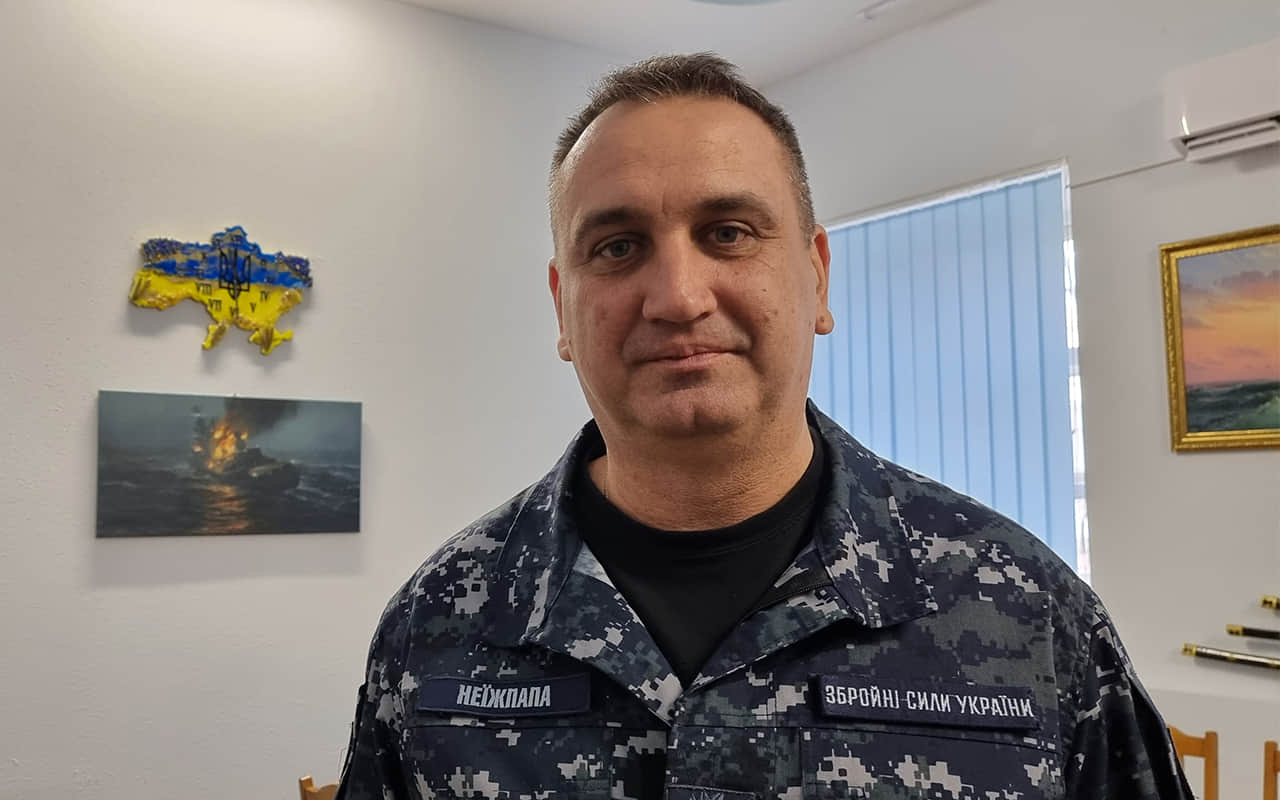
But with particular interest, the Vice Admiral shows his scratch map, which depicts the entire Black Sea Fleet. After every successful operation at sea, Neizhpapa marks Russian losses on this map: if a ship is damaged, the silver paint is partially scratched off at the point of damage, and if the ship is destroyed, it turns into a completely red spot. Like, for example, the Moskva cruiser or the Rostov-on-Don submarine.
"One day, everything here will be red," Neizhpapa says conspiratorially and breaks into a genuine smile.
Read about how a country without a large navy managed to sink and damage two Russian fleet flagships, why the Hetman Sahaidachnyi was sunk, whether Ukraine will be able to force the Black Sea Fleet out of Crimea, and how Neizhpapa returned to Sevastopol for the first time on a marine drone in his first major interview with Ukrainska Pravda.
Read also: Sea drones, Elon Musk, and high-precision missiles: How Ukraine dominates in the Black Sea
The beginning of the invasion and the Hetman Sahaidachnyi
Now, there is some understanding that in February 2022, the state leadership considered an escalation possible only in Donbas. Did you believe that a full-scale war would actually take place?
I am a military man. I have to prepare for the worst-case scenarios; it's my job. Before the start of the full-scale aggression, the enemy had created a full-fledged grouping of amphibious forces, gathering landing ships from all navies, and had acquired the capability to land a full-fledged marine brigade in several areas simultaneously.
So, of course, I understood that the war would not be limited to Donbas. We understood this perfectly well and were preparing for it.
And how exactly? For example, the Air Force deployed helicopters to the fields and prepared backup airfields. What did the Navy's preparations look like?
A certain flotilla was created in the Navy by order of the Commander-in-Chief of the Armed Forces. This grouping was dispersed; some ships were at sea, and some were at other base points, non-standard, as they say, at civilian berths or other facilities. But most of the ships were at sea.
Therefore, in the first days of the war, no warships were damaged after massive enemy attacks; they were all dispersed. Naval aircraft were also lifted from airfields. We had no significant damage to our naval aircraft at the beginning of the full-scale aggression.
Our only significant loss was the Hetman Sahaidachnyi frigate, flagship of the Ukrainian Navy. Can you tell us about the decision to sink it?
At the time of the full-scale invasion, the Hetman Sagaidachnyi was undergoing repair and modernisation work. She had no power, all the diesel generators were to be completely replaced, the turbines were being repaired, and all the weapons were out of order.
As a warship that could participate in repelling aggression, she could not operate at all at that time.
Therefore, the ship's commander made a reasonable decision, in my opinion. This is spelled out in the "On Ship's Service" regulation: the enemy must not get the ship. At that time, the enemy was advancing very quickly through Kherson Oblast, had already bypassed Kherson, and was on the outskirts of Mykolaiv.
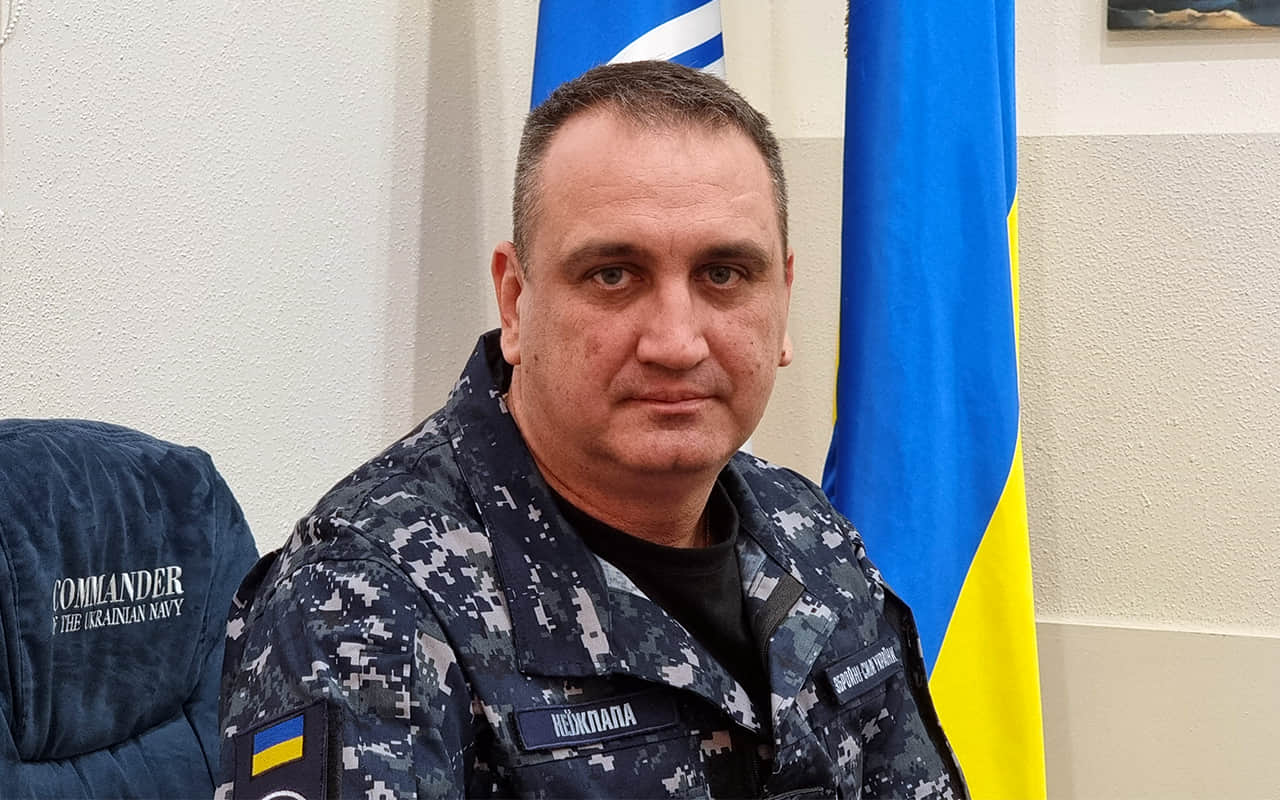
Do you remember the morning of 24 February? How did you find out about the start of the invasion?
I heard everything myself. I was at my workplace in my office and heard a cruise missile fly over. And then, as they say now, there was a strike at Shkilnyi airfield (in Odesa - UP). We felt it. That's why we understood everything at once. Then, the operational officer on duty gave a report, but I had already understood that this was the beginning of the full-scale invasion. Then, of course, I gave a report to the commander-in-chief, and all military bodies swung into action.
You said that at the beginning of the full-scale invasion, the Russians had assembled full-fledged units capable of carrying out large-scale landing operations. But there were no landing operations. How was this avoided?
To give you an idea, an amphibious operation is one of the most complex naval operations of all. It involves all branches of the Navy. The first, of course, are amphibious assault ships, the marines themselves. But these are also fire support ships and aircraft.
For amphibious assault, you need dominance in the air and at sea. At that time, the enemy had such dominance. But still, a naval amphibious operation is usually conducted in the direction of the enemy's main attack. It begins when the right conditions are created on land.
After the full-scale invasion, the enemy advanced to Mykolaiv, then went northwest, bypassing Mykolaiv towards Voznesensk, to enter the rear of Odesa Oblast. If our 80th Air Assault Brigade had not stopped the enemy near Voznesensk, the conditions would have been created for the Russians to launch an amphibious operation in the Black Sea operational zone.
But the Navy did not stand still. We were building minefields in the areas accessible to the landing force. From the very first days, the artillery unit of the Marines and other brigades stationed in Odesa Oblast at that time were brought to the area around the firing positions. We intensified radio and radar reconnaissance, both with the use of radar posts and Bayraktar unmanned aerial vehicles to detect enemy landings.
In other words, we were also preparing for such enemy actions. Yes, the landings did not occur, firstly because the conditions on the ground were not created at that time. Secondly, you know the story of the first time we hit the frigate Admiral Essen with Neptune missiles. And then there was the Moskva cruiser. And the enemy realised that it would be very difficult to just come to our shores without sinking. So, of course, it abandoned the amphibious operation.
The first success of the Neptunes and Zmiinyi Island
You mentioned Neptunes. Do you remember the first Neptune launch?
Of course, I remember.
Can we talk about it now?
The first use of the Neptune was when the frigate Admiral Essen came very close to our coast. She was followed by other landing ships along the Tendra Spit.
What area were they heading to?
In the direction of the port of Pivdennyi, between Pivdennyi and Ochakiv, somewhere in the middle, to the area of Rybakivka (a resort village in Mykolaiv Oblast - UP).
They carried out so-called demonstrative actions. Why was this done? To make sure that the marines and other units that were standing on the shore at the time were constantly preparing for the landing to prevent these brigades from being moved to the Mykolaiv front or to Voznesensk to help. The enemy wanted to keep us in constant suspense that an amphibious assault was about to take place.
At the same time, their ships were sailing near Odesa, firing shots from deck guns at the city and shelling civilian targets. It was clear that there would be no landing right now because the conditions were not right. But they kept repeating it, airborne units lined up in formation, moving towards Odesa with fire support ships - everything was classic, by the book. But we understood that these were purely demonstrative actions.
And when the Essen approached, we decided to try and see what our Neptune could do. The first launches were not as successful as the ones against the cruiser Moskva, but it was the first time that the frigate Essen was damaged. As far as I know, they had several cargo-200s [killed servicemen – ed.] on board. The ship urgently returned to Sevastopol for repairs; the missile did not hit the ship directly, as I understand it. There was an explosion right next to the ship, damaging the weapons system on this frigate.
And the most interesting thing is that they even shot down their own aircraft, which were providing air cover for the ships, right off the coast.
This was the first use of the system.
Did the amphibious assault ships that accompanied the Admiral Essen also turn around and leave?
Yes, they did. But, as I understand it, they did not realise that we had powerful missile weapons and continued doing almost the same thing.
There were approaches to our shores. There were many strange episodes. For example, the frigate Admiral Makarov was chasing a small diving boat that was sailing along the shore, delivering a fire strike, and there were big splashes of water next to the boat, just like in the films.
But the crew was not confused; they came under the protection of the coastal artillery, which hit the Makarov. The latter realised that she had nothing more to do there and quickly returned to Sevastopol.
There were many such examples. Therefore, this small war at sea continued at that time.

On the first day of the invasion, Zmiinyi Island was captured. Did the garrison guarding the island have any theoretical ability to resist the enemy forces that were attacking it?
What can I tell you... The garrison had some small arms and anti-tank weapons, but there was no full air or sea cover because we didn't and we don’t have cruise missile carriers. This garrison could not withstand such an armada of the Russian Federation in the event of full-scale aggression.
It was deployed in order to prevent the so-called asymmetric actions that could occur in the event of a "Crimean scenario". If there was a seizure by Russian special operations forces, our garrison on the island would be deployed to repel such actions.
At that time, it could not withstand full-scale aggression. We had not yet built coastal missile forces that could, as we do now, engage enemy ships, and we did not have medium-range air defence systems to destroy enemy aircraft on approach.
The garrison was in a very difficult situation. I asked for permission from Zaluzhnyi, the Commander-in-Chief of the Armed Forces of Ukraine, to evacuate the garrison. I received permission. But due to the weather conditions, we did not have time to do it, unfortunately.
How did the balance of power at sea change after the capture of Zmiinyi?
Zmiinyi became a bridgehead for the Russian Federation to control shipping on the Danube River and on the approaches to the ports of the so-called Greater Odesa: Chornomorsk, Pivdennyi and Odesa. From this island, enemy boats raided the Danube. They tried to mine the approaches to the mouth. There were even fire clashes between these boats and the Ukrainian Navy boats directly in the Danube itself.
This island was also used to isolate the area. You know that the enemy, with the start of full-scale aggression, created a flotillia consisting of amphibious assault ships, fire support ships, mine countermeasures ships, ships that fired Kalibr missiles on Ukraine, and a detachment of ships to isolate the area.
The latter were led by the cruiser Moskva. This cruiser was used as a command post for area isolation and airspace control in the combat zone. These ships carried out complete isolation from Crimea to the Danube in order to prevent what they believed to be partner ships or civilian vessels from entering the area of hostilities.
First sunken flagship Moskva
And what about the Moskva cruiser? How did we manage to track it down? Because both we and our Western colleagues have completely different versions of this story.
It's great that everyone has different stories. You know, I would say this: there are many paths, but only one truth. So I'm not going to tell you how it happened.
I can only confirm that the Moskva cruiser was destroyed with the help of the Ukrainian Navy from the beginning to the very end: from detection to destruction.
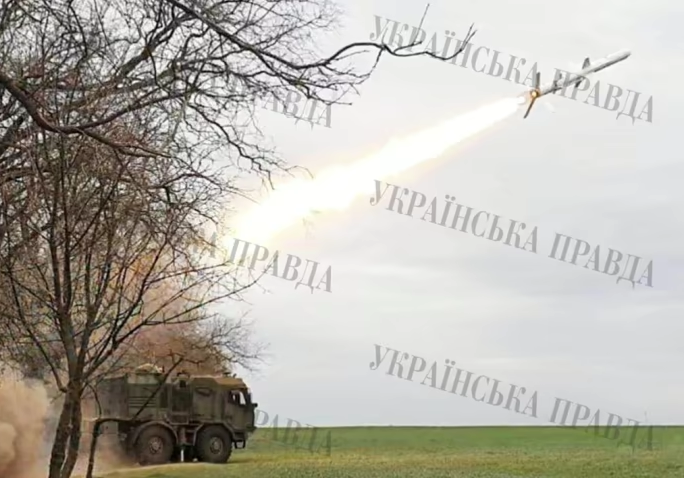
Okay. Can you explain, at least for people who have not devoted their lives to the sea and warships, what the Moskva cruiser meant to the Russians, both in terms of military and propaganda? So that people can feel what the Moskva means for the Black Sea Fleet.
Just so you know, this is a guards’ cruiser with a guards’ ribbon. This yellow and black ribbon is a symbol of the victory, as they say, in the Great Patriotic War. All seamen wearing sailors’ caps have been wearing this ribbon as a matter of routine since Soviet times.
The Moskva cruiser was built in Ukraine, in Mykolaiv. The first cruiser of this series. There were four in total. The fourth one is still unfinished in Mykolaiv. She is based on the design of a large anti-submarine ship, but even larger. Her first name was Slava (the Glory).
She is a flagship. If there is no cruiser, in the long run, a fleet cannot be called a fleet. Without a cruiser, a ship of the first rank, it is called a flotilla. This understanding of ranking has been accepted as mandatory since the Soviet Union.
Now their flagship is the Admiral Makarov frigate, not a cruiser. By old Soviet standards, she was a second-rate ship. Now, probably, her rank has been raised, because she is still a carrier of Kalibr missiles. So the Moskva cruiser was precisely the flagship of the fleet.
By the way, she was named Moskva after the mayor of Moscow requested that one of the ships in the Black Sea Fleet be named after the Russian capital. Until then, a large anti-submarine aircraft carrier was called Moskva. I saw her when I was a cadet at our institute of the Ukrainian Navy. That is to say, she was still part of the Black Sea Fleet after Ukraine declared its independence.
And then she was decommissioned and, of course, the Russians had to pass the name Moskva to something else. At the time, the Slava cruiser was undergoing long-term repairs at the shipyard in Mykolaiv. And then, as they say, everything coincided: they decided to name her after the Russian capital.
And since then, she has been the focus of attention of President Putin personally, who has visited this cruiser many times, and of the then Moscow mayor Luzhkov and his successor Sobyanin.
She was the pride of the Black Sea Fleet. The cruiser took part in all the conflicts of the post-Soviet period: in the war with Georgia, she was used to control all the fleet forces off its coast, she was in Syria and in the area of other conflicts.
The cruiser was fully serviced before the full-scale war of aggression, and a lot of money was invested in her modernisation. But as I understand, this modernisation did not help.
From a political and image point of view, this is a great loss for Russia. Especially from an image point of view. From a military point of view, this cruiser is designed for the ocean, she is not designed for the Black Sea, she is too small for it. Because the forces and means that were installed on it are primarily cruise missiles with a range of 500 kilometres.
During the Cold War, she was designed to destroy US aircraft carriers. She was even called the aircraft carrier killer. Of course, there are no aircraft carriers in the Black Sea. The Montreux Convention forbids them from entering there. And it is difficult for such large ships to pass under the bridges in the Bosphorus Strait. Therefore, from a military point of view, this cruiser was not really needed here.
The only thing was that the Moskva could be used as a good command post. She had large flagship cabins. Just so you know, I think there were seven floors. There was a lift to go from the main command post, which is below the main deck, to the bridge. Seven decks that the lift goes through! Well, so that the commander or the senior officer on the commanding officer’s bridge did not have to walk. There was a swimming pool. In other words, the ship provided very comfortable living conditions for personnel onboard for long voyages.
And, of course, the Moskva covered the main issues of air defence: she was equipped with detection systems, electronic warfare, and a naval version of the S-300 air defence system called Fort. It was a type of umbrella air defence over the ships of the order (the order of deployment of ships during a campaign or battle – UP).
In other words, the Moskva served several functions: a command post, an air defence ship, and a symbol that "Moskva came with the war". Everything begins with Moscow, and, as I think, it will end with Moscow.
What do you feel when you are sinking such a ship?
Of course, emotions were overwhelming me. You know, in a day, and she had been sinking for almost a day, I got calls from everyone: "Did she sink or not? Did she sink or not?". I said: "I can't track her down, I'm not near her."
We knew the vessel was still afloat. We tried to track her down, but we didn't have all the information. There was some information in the press, in open sources in Russia itself, and some information we got from radio intercepts.
But first of all, we realised that there was indeed an impression when I was informed that all the ships that were close to the cruiser started moving towards it very quickly.And the cruiser herself, let's just say, went into a drift – stopped moving. Then we realised that we had struck her.
Then we started reconnaissance, radio intercepts, and reports. Almost a day later, she sank. Of course, there were emotions. But we hadn't yet comprehended the significance of the moment. Because the war was still ongoing, tomorrow someone might come again, we had to work with cruise missiles or whatever. There was no time to sit around and feel some kind of great victory, the situation was very tense at the time.
Yes, there was joy, of course, that Ukrainian weapons had been so successful. Of course, this was a historic moment. But for me personally, it somehow passed very quickly.
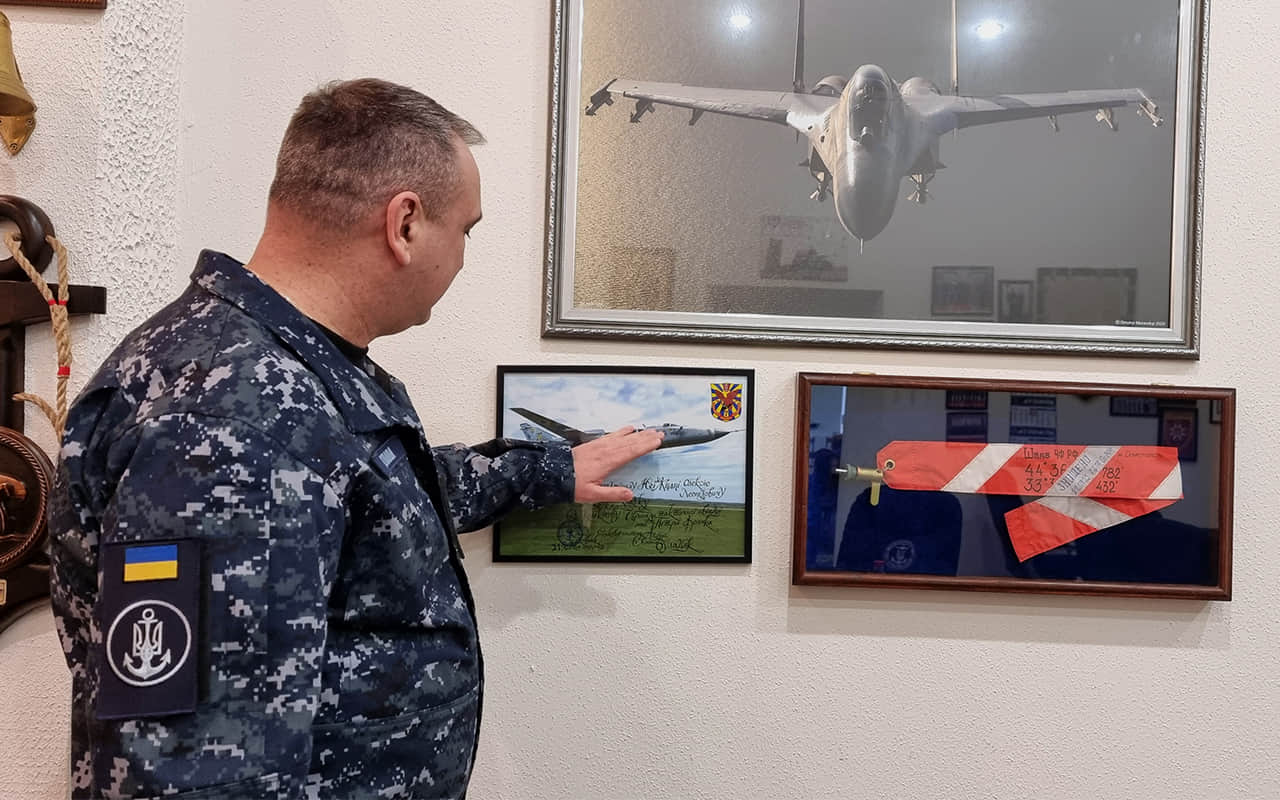
But, in fact, the sinking of the Moskva overturned the entire balance of power at sea.
Of course, after the sinking of the Moskva, the enemy realised that it could no longer approach our shore without any difficulty. It had to make some other tactical decision. And the ships of the Russian Federation, especially the large ones, were much further away from our shores than they had been since the beginning of the full-scale aggression. They did not come closer than about 100 nautical miles (a little over 180 kilometres – UP).
It was a definite victory. In April 2022, we turned the northwestern part of the Black Sea, which is almost 25,000 square kilometres, into a grey zone. Where, by and large, Russian ships cannot enter the area because there is a risk of them being sunk by our coastal missile forces.
And, of course, we ourselves cannot feel safe in this zone either, because the enemy still has air superiority, and they also have coastal missile forces. Just as we operate with our missile systems in the Autonomous Republic of Crimea, the Russian Federation does the same in Odesa Oblast.
It's a big grey area that no one can fully control. But there are no Black Sea Fleet ships there and there will be none. And this is the first serious stage in liberating the sea from Russian invaders.
Drones and the second damaged Black Sea Fleet flagship
It is interesting that you will go down in history as the naval commander who hit not one, but two flagships of the Russian Black Sea Fleet. The Moskva was sunk and the Admiral Makarov was damaged. And not by missiles, but by naval drones.
You know, this is such a story! I think that later, together with my comrades from the Security Service, we will write a historical description of how it happened.
There were many comical incidents during these attacks. And there were several of them - more than once we tried to hit this particular frigate, the Admiral Makarov. Another frigate, the Admiral Essen, was also hit by us directly in Sevastopol Bay. So, she was damaged twice: the first time by a Neptune cruise missile, and the second time by one of the drones that exploded nearby in Sevastopol Bay.
UP wrote a story about these attacks, and General Hunter described in a very vivid way the story of how you were operating drones in Sevastopol Bay, how you were operating them from memory...
...Not just from memory – I can see everything, the camera works. And I'm fully aware of where everything is. And I gave commands directly: I stood behind the cameraman, roughly speaking, so that he could do his job properly.
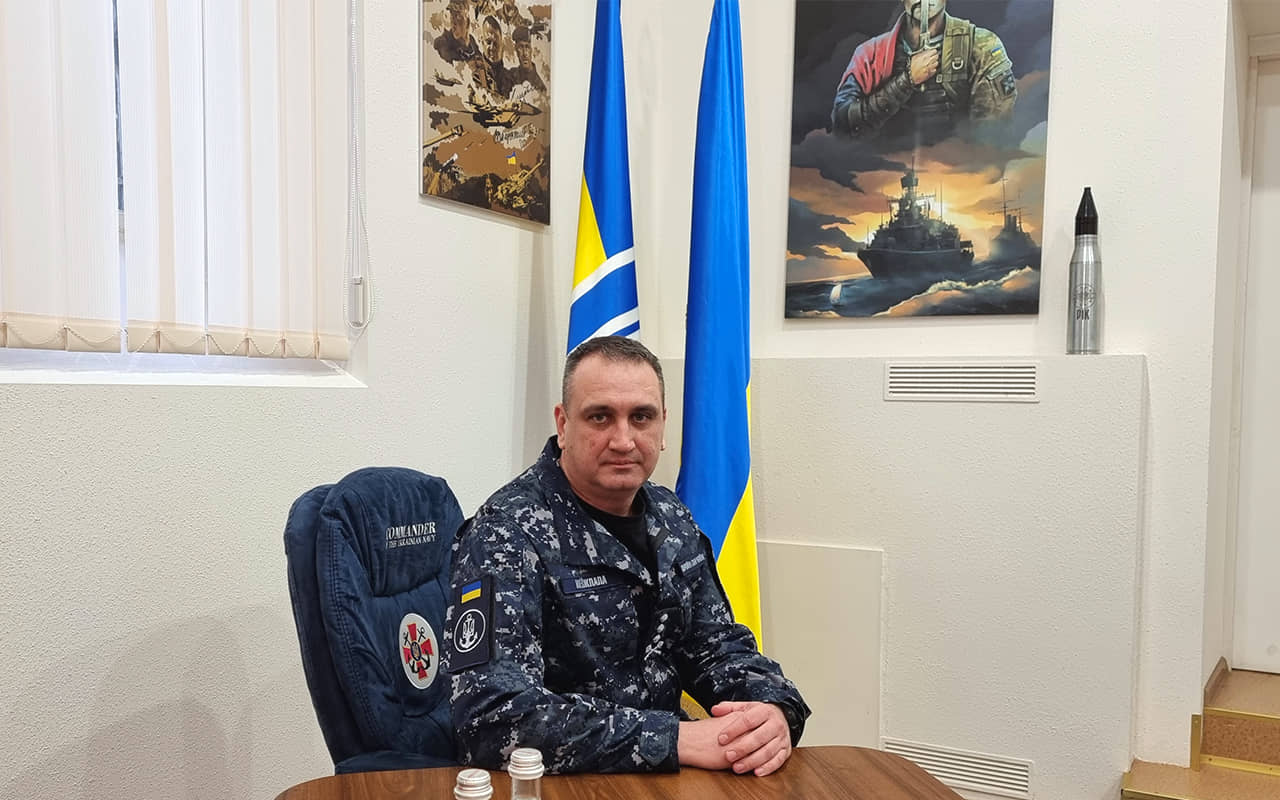
By the way, the head of the SSU, Vasyl Maliuk, says in the same text that a new era in maritime operations has begun with the use of these drones. Do you agree with this? And if so, what is this epoch-making change?
You know, any war is a development of military technology. We use technology, and the enemy develops countermeasures. This is the only way to understand whether it works or not.
Some of our tricks and tactics that were worked out in 2022 and 2023 will not work in 2024. Therefore, you need to change tactics, change the technical characteristics of everything you do.
In general, since the beginning of the full-scale war of aggression, missile forces and naval drones have played a very significant role in liberating the Ukrainian sea. So I agree that unmanned technologies are the technologies of the future for military conflicts. We will get to the point, and this is not the first time I have said this, that the war of the future will be a war of drones against drones. This is how it will be.
But the sea has a certain nonlinearity. Therefore, to say that only these medicines are suitable for this disease, and the rest can be thrown away, I will never say that. Yes, drones are another way to kill the ruscists. I agree with this, it works. But there are certain limitations to the use of these tools. First of all, it's their size, weapons, and ability to withstand weather conditions – a lot of things that distinguish them from a ship.
Of course, there is a very big difference between sitting in a bunker in front of a screen and seeing the enemy through the TV, the enemy on a ship watching this drone. It's like when a soldier on the battlefield sees a drone flying at him from above, but he can't do anything.
But the enemy also understands this, and will use drones at sea in the same way as they use them on land. The enemy is also learning, it also has a very powerful industrial complex, and the Russians have always had money to spend on weapons. Therefore, we are facing very difficult drone wars ahead.
We have to move in that direction, we have to develop. I strongly support Vasyl (Maliuk – UP) that drones are a weapon that can bring us closer to victory at sea.
But this is not the only solution. Simply switching the fleet to drones and winning won't work. It would be like the Army giving up tanks, armoured personnel carriers, guns and everything else.
You can't put landing troops on drones...
Yes. You can consider a territory yours only when your soldier or marine has a boot on it. Then it is your territory. The same is true at sea. When you have a ship in these territorial waters, and no one can do anything with it, only then is it your sea.
How to completely destroy the Black Sea Fleet
In his recent interviews, President Zelenskyy has openly hinted that this year Ukraine is focusing on driving the Black Sea Fleet out of Crimea. After the successful operations in the summer and autumn of 2023, to what extent is Crimea still a comfortable base for the Black Sea Fleet?
What is a base? It is a logistics support centre for the fleet. Sevastopol is a base that has been built for centuries. There are ammunition and fuel stocks scattered there, hidden in the mountains, which are more challenging to hit. Kalibr missiles are also located there because there are closed storage systems for them.
– Secondly, Sevastopol has a medical supply centre, a large hospital, and so on. All educational institutions were built there. That is, Sevastopol is such a strategic hub.
It is physically dangerous for the fleet to stay in Novorossiysk, especially in large numbers. The military port that Russia was already building there during Ukraine's independence was enlarged, but it is not developed enough to provide the base for the Black Sea Fleet.
Moreover, immediately after the occupation of Crimea, almost all the resources allocated for the development of the entire Russian fleet went to the Black Sea Fleet. Russia was preparing for this war, it reinforced the Black Sea Fleet as much as possible: the latest frigates, submarines, missile boats with Kalibr missiles.
And Sevastopol is the main base that fully satisfies the maintenance of the fleet, a repair base, several repair plants, and airfields, including Belbek and Kacha. In Novorossiysk, for example, there are no airfields, no large repair plants, no weapons storage facilities, etc.
This is, by and large, one of the reasons why they ended up in Crimea in 2014. Because without Sevastopol, they would not have been able to keep the Black Sea Fleet in the Black Sea.
To what extent can Russians safely use this Crimean hub now? After the Ukrainian attacks, including drone strikes.
Once again. It is necessary to understand that we have more than just drones. The Ukrainian Air Force with its famous Storm Shadow [missiles] plays a very important role. It was they that provided very precise strikes on the Black Sea Fleet headquarters. Or for the first time in history, a submarine was destroyed.
This is a historic event, by the way, somewhere on the level of the Moskva cruiser. The Kalibr missile carrier was destroyed right when ishe was in dock. A powerful new submarine with the lovely name Rostov-on-Don. Or the latest Askold missile boat, which was never introduced into the fleet.
These are the accomplishments of the entire Defence Forces: the drones of the Security Service of Ukraine, of course, the Air Force, our Coastal Rocket Forces, and the Defence Intelligence of Ukraine’s means that are available to them. And this set of measures we have taken has forced the Russian Federation to reduce the use of Sevastopol as its main base. And recently, Feodosiia as well.
How feasible is it to make sure that Russia, even if it controls the peninsula, cannot use its naval bases?
This is work that must be done. There is a task which the president and the Commander-in-Chief of the Armed Forces have to do, and we will do our job.

Russia is now building a new naval base in Abkhazia. What is it for?
There is some information about this. It's not really a base, but a base point, most likely for the dispersal of the ship's personnel. After all, it is not reasonable to keep the entire fleet at one base. Moreover, Novorossiysk is not a very pleasant port for a base because of the weather conditions, especially in winter. Sevastopol is a very closed bay. Geographically, it is very suitable for anchoring ships. It is protected from all winds except the westerly. Which is very symbolic, by the way.
And Novorossiysk has very unpleasant winds, called Bora. This is a strong wind that blows down from the Caucasus Mountains, so the anchorages at the port are dangerous. In addition, entry to the port in Novorossiysk is dangerous in itself, and so in certain weather conditions the ship's commander needs to have considerable skills just to ensure navigational safety. I'm not talking about sailing or combat use there, it's inconvenient for ships to just stay in this port. So, of course, this is a problem for Russia, which they now want to solve somehow.
If Russia builds this base in Abkhazia, will it be a legitimate target for Ukraine or not?
For us, a legitimate target is any ship that carries the St Andrew's flag of the Russian Navy. Wherever it is, anywhere in the world's oceans.
Grain corridor, NATO convoys and sea mine clearance
After the successful actions of the Defence Forces at sea, Ukraine was able to launch its own sea corridor. Zelenskyy has recently said that partners would provide ships to escort vessels in this corridor. Was he referring to the UK ships that Türkiye has now refused to allow to enter the Black Sea, or to other vessels?
These are slightly different things. Türkiye has stated that they will not allow the minehunter ships Cherkasy and Chernihiv into the Black Sea. These two vessels were provided to us at the beginning of 2023 and are already part of the Ukrainian Navy, although currently in the United Kingdom. There, our crews are undergoing NATO-standard training, and upon the completion [of the training], I believe these ships will be fully compatible with NATO countries in terms of mine countermeasure operations.
However, we did not request passage through the Turkish Straits for these ships because we understand that the Montreux Convention prohibits it. Otherwise, the Russian Federation could do the same and increase the number of, for example, missile carriers or landing ships. We understand this, and therefore we did not attempt to do so.
I think there might have been some misunderstanding in the media. I can only speculate, but minehunters are sailing from the UK to Romania. They are exactly the same, of the same class as ours. Perhaps, this issue arose in the press due to them. However, these are ships purchased in the United Kingdom by Romania for their own purposes.
As for the ship escort mentioned by the president, we are negotiating the involvement of NATO ships to ensure the safety of civilian shipping to the ports of Ukraine. When and whether they will be implemented, there is currently no information. I personally asked our partners for this.
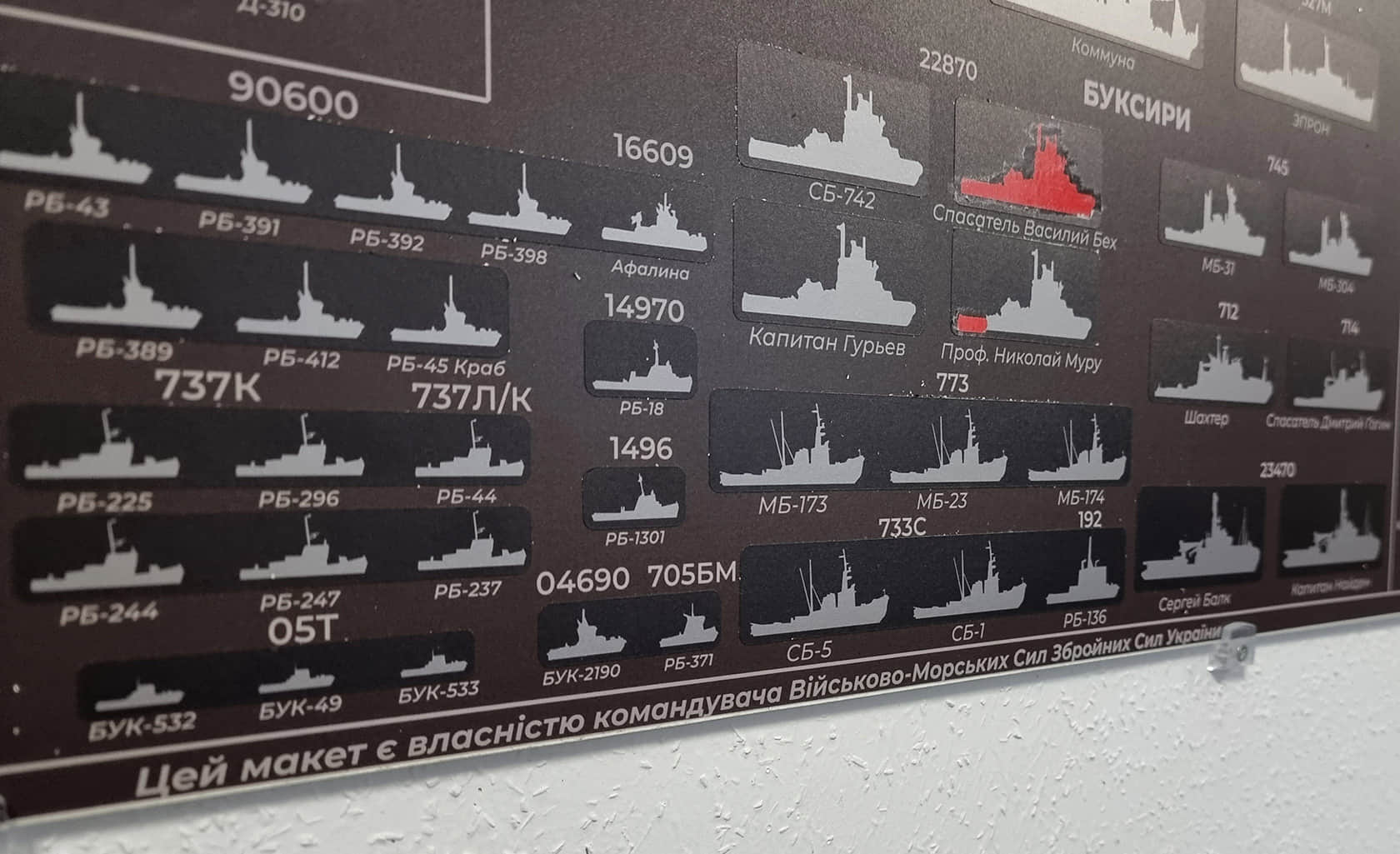
Are these supposed to be Romanian or Turkish ships that are already in the Black Sea?
We won't disclose the specific ships at this time, but I have contacted several commanders with requests. This is a matter of a political nature. Therefore, all my fleet commander friends have confirmed that if there is a political decision from the leadership, they will implement it. Currently, this issue is being raised at presidential level. If he has said so, that means he and his office are working on it.
The Turks, Bulgarians and Romanians have now launched a joint mission to clear the Black Sea of mines. Can it be extended to Ukrainian waters as well? Or is this also a political decision?
I visited Romania in early September. There was a meeting with all the fleet commanders of the Black Sea, except Russia, of course, plus experts and commanders of the US 6th Fleet, and the NATO Navy commander was also present.
We discussed further actions to ensure mine safety in the Black Sea. Ukraine, of course, is particularly interested in this, so we proposed dividing this effort into several stages.
The first one is direct countermeasures against mines, which are being carried out right now, while a full-scale war is underway and there are certain restrictions under the Montreux Convention.
The second stage is that Romania, Bulgaria, and Türkiye are now forming a joint tactical group to combat drifting mines. For now, they will deal with those mines that are in their area of responsibility, not off the coast of Ukraine or in our exclusive economic zone.
Our vision is that we should also be part of this group to have our representatives for coordination. And that's exactly how it will be.
And the third stage is that a full-scale mine countermeasures operation will begin immediately after our victory. For this purpose, the Ukrainian Navy has set up an appropriate headquarters, people are undergoing training, and we already have minehunter ships that will sail to the Black Sea immediately after the victory. We are training our specialists and divers, among other things.
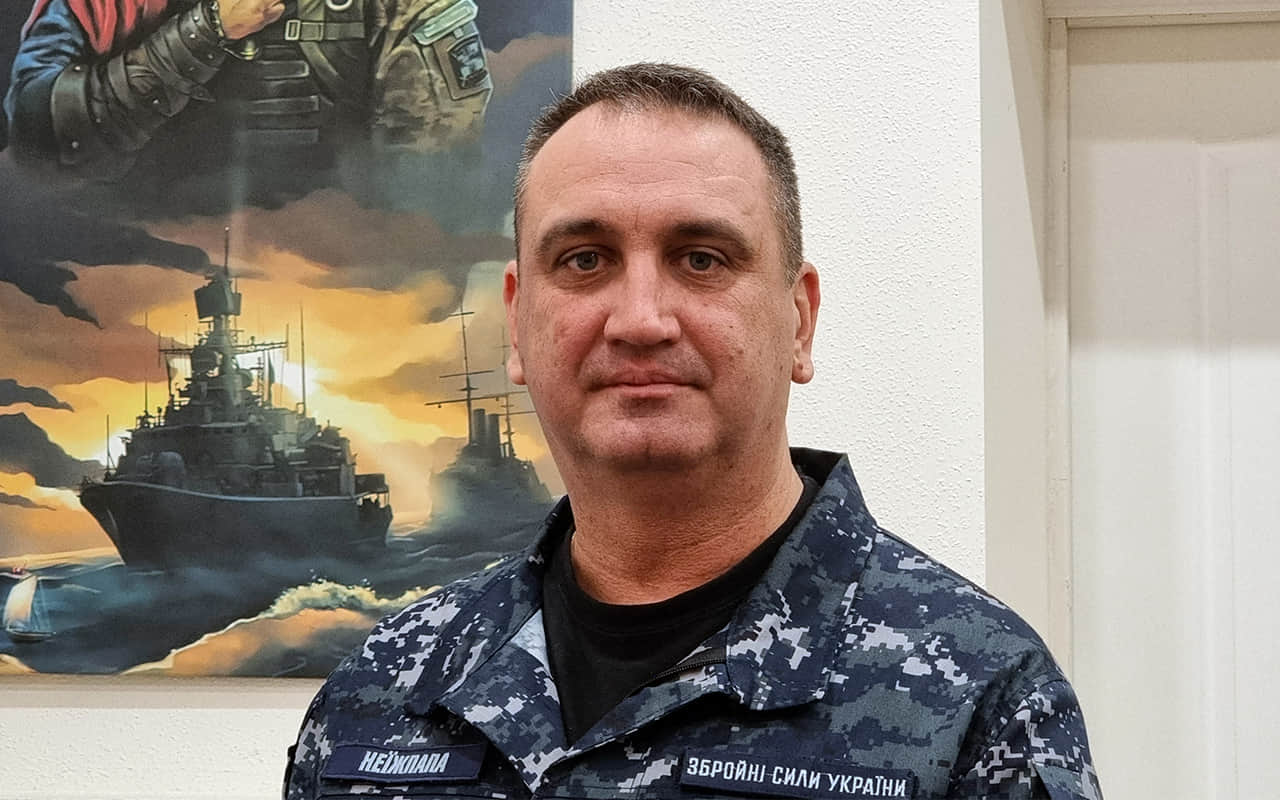
And how long will it take to complete this large-scale operation to clear the whole of our sea?
It depends on the available forces that we will be using. First and foremost, we will have to clear the recommended routes and anchorages – the ones used by civilian shipping. All ships sail along the recommended shipping lanes. There are also roads at sea, though no one marks them with kerbs.
It will take 5–7 months to provide these lanes, anchorages, etc. But again, everything depends on the number of ships and assets that will be involved in this operation.
We will have the two minehunter ships I have mentioned. This year, we are going to receive another minehunter ship from the Netherlands. Then in 2025, one more. That is, we will have a full-fledged mine clearance division. But if a NATO group, for example, joins us in our area of responsibility, it will be faster.
However, mine clearance of the entire area of hostilities, which includes the Black Sea and the Sea of Azov, will take years.
Roman Romaniuk, Ukrainska Pravda
Translation: Khodatska Yelyzaveta, Yurkiv Violetta and Tomyshch Nikol
Editing: Susan McDonald